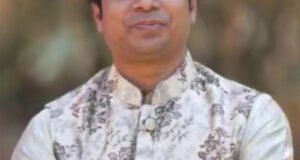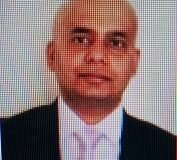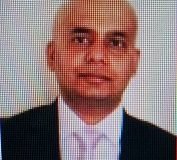
By: Afzal Sayed Munna:
The term poverty is defined in many ways and measured in a commonly used approach of relative income poverty. Often it has been defined in a conventional way where the line of poverty at national level is determined as the level of purchase required maintaining minimum level of calories. This was alternatively defined at international level with an access to $1 or $2 per day per head. Which was evidenced differently from the research conducted by the Joseph Rowntree Foundation (JRF) charity (2017) and according to them, income less than, £248 a week for a couple with no children, £144 a week for a single person with no children, £401 a week for a couple with two children aged between five and 14 and £297 a week for single parent with two children aged between five and 14 would fall under poverty definition. In UK the poverty also was categorised as relative poverty and absolute Poverty. Those with relative poverty cannot afford ordinary living patterns and on the other hand, absolute poverty would occur when someone has no access to the basic needs of life.
According to UNDP (2000) the eradication of poverty was considered as an important development goal, which considered the two way process including direct and indirect. The direct approach was to increase the level of income, which considered the access to food, water and employment. On the other side indirect approach considered the education and health services.
The concept of marginal efficiency of capital defined by (Mincer, 1972) analysed the relationship between education and earnings with the assistance of rate of returns on the human capital and production function analysis. However, inclusion of socio-economic, occupational and other variables did not helped to reduce relative significance of education in increase in earnings, but the demand function showed the increase in earnings will further extend the demand for education. On the other hand, the basic needs approach identified by the International Labour Office, 1976 defines education as the basic needs and equality of access to educational services, specially the underdeveloped and rural areas which helped them believe to consider this to establish an strategy.
Noor (1980) stated that, the fulfilment of the basic needs including education has a greater relationship as they fuel each other reinforcing to attainment. World Bank (1994) on their findings recognises that, poverty is not a problem of low income; rather it is a multidimensional problem, which affect and deny the access to various vital opportunities including education. Amartya Sen (1999) redefined the human development approach and provided alternatives which identifies the human capabilities and according to him the poverty is the deprivation of capabilities and thus later in his findings he distinguished the income poverty and capability poverty.
Sen provided the development cycle and in his view, development seen as freedom, and freedom encompasses education, which later enhances the possibility of human capability. Sen also analysed the relationship between the low income and low capability. Accordingly to him, education is so powerful that it can significantly influence the income poverty and capability poverty. In fact he strongly believes that, education deprivation is itself capability poverty, and access to education including the investment is responsible reducing the capability poverty. The research also evidence that, the human poverty that includes the education poverty and interrelated with the capability poverty. Few characteristics identified from various research indicates that, education poverty includes: low school attainment rate, high rate of drop-outs and failure, low rate of contribution which also reflected on low academic performance and achievement. Sen explained that, every aspects of education poverty are positively interrelated with the income poverty. He strongly believes that, the poverty of education is the principal factor responsible for income poverty and income poverty in turn, does not allow people the access to the education. Author believes and agrees with the phenomenal development of the concept that, the improvement in education poverty can helps reduce the income poverty and mutually reinforce each other. It also was found from the fundamental research that poverty and education was considered as a human capital dimension and thus always tried to prove the strong relationship between them. Field (1980) clearly stated that, education and poverty are inversely related which accepts that, higher the level education of the population, lower the proportion of poor people, as education impact on knowledge and skill development which positively correlated with the higher income earnings.
Micro-level investigation on developing countries by Tilak (1994) shows the relationship that the incidence of income poverty is at its largest percentage on an illiterate household which is opposite in a literate household. Galbraith (1994) identified the same and he believes, no well-educated literate population that is poor, and there is no illiterate population that is other than poor. Tilak (2002) in his research on developing counties identified two factors, which significantly influence the education poverty namely: economic factor and school related factors.
Economic factors influence many low-income families as they consider the opportunity cost of sending children’s to education. On the other hand, the school related problem concentrate on the quality of teachers, proportionate number of teacher per child, educational materials, schooling facilities and so on. All these factors affect the children’s attainment to the school, which in turn results in low and or poor performance and achievement. The education poverty thus interrelates the income poverty, which was found from the macro level analysis as well. However, Haq and Haq (1998) slightly spread these views in a different angle where they believed that, it is not impossible to break the poverty equilibrium and government has a great role to play. They believed the society income poverty is no longer a hard barrier to the access of education rather it is the government that can take a lead to increase the educational resources to provide the opportunity to all at a large.
The author presented the brief literature analysis to make a relationship between the two distinct elements: poverty and education. The analysis reviewed various literatures and recognises the basic needs at a minimum level. The author strongly agrees with Sen that income poverty is positively correlated with education poverty and also accepts the view from Haq and Haq (1998) that, to eradicate income poverty and improve the level of education to help children’s achieving higher academic results, the respective government has a vital role to play. The acceptance of the strategic goal ‘’Education for All’’ and making appropriate educational resources available to all could be a possible solution to the grass root problem and possibly could shed a light under the darkness.
Afzal Sayed Munna, Doctoral Researcher, Teacher and Political Activist
afzalsayedmunna@googlemail.com
 Weekly Bangla Mirror | Bangla Mirror, Bangladeshi news in UK, bangla mirror news
Weekly Bangla Mirror | Bangla Mirror, Bangladeshi news in UK, bangla mirror news




